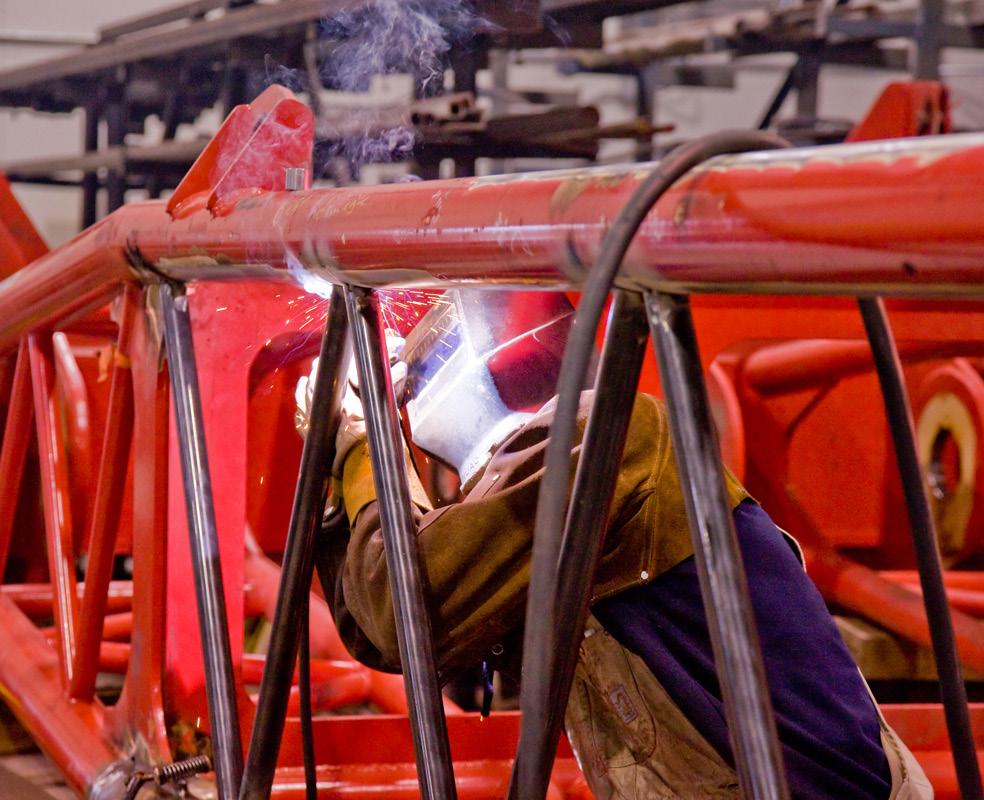
4 minute read
Phakamisa
machine? Even better is when we see the use of ticks and crosses? Remember this is a legally binding document – ticks and crosses are not regarded as thorough.
The reason for this is quite simple – mentorship seems to be lacking. People are unaware of what a full and thorough inspection actually entails and lack the knowledge to actually conduct and document a full and thorough inspection. We have a lot of companies requesting our services and telling us they require a “load test” – basically apply the load and do a deflection with minimal inspection criteria. When we state we need to do a proper inspection we get told “the last guys didn’t have to do that why do you?”. Well to start - its law? We are required to conduct a proper inspection as per DMR 18(5) & (6) – remember we all referenced that?
A lot of organisations use criteria from the incorporated standards to compile report templates – these are just guidelines and generally more criteria is needed to fully comply. LMI’s should have enough knowledge through standards, training, experience and mentorship to be able to identify all working parts and conduct a thorough examination and document the findings. insurance assessor and DEL on the principles of this matter, without mentioning any names. All agreed that it is a total conflict of interest and completely defeats the point of an LME. All agreed that the organizations engaging in repairs/ maintenance cannot conduct the inspection and load test – they all made reference to the principle of the individuals or organizations “being the judge and the jury – and that is not in the interest of safety, transparency or quality assurance.”
We have had a conversation on this principle with a major Therefore one must conclude that it is a complete conflict of interest to offer the “full service” – and it is not in the interest of the user/ owner, safety, quality assurance or transparency amongst service providers. This means that the orgonisation doing repairs and maintenance must be completely independent and a separate legal entity with no association to the orgonisation doing the inspection and certification.
World Wide Load Testing Specialists, +27 (0) 31 572 4940, ops@wwlts.co.za, www.wwlts.co.za

What is MRT Rope Testing

Magnetic Rope Tester type HRD 100
After our article on wire rope inspection “To Open or not to open” was published in the Sept/Oct 2019 issue of Lifting Africa, Cranemec received many requests to explain why Lifting Machine Inspectors (LMI’s) should use this method in their wire rope inspection procedures during the lifting machines annual inspection, load test and thorough examination. If you need to know then this article is a must to read.
Wire ropes often quite literally provide a lifeline for industry in hostile and demanding conditions. Any person involved in the management of steel wire ropes on any type of lifting machine can reasonably be held accountable if or when it fails. have been using the old 2010 standard which may have serious implications concerning the validity of the Inspection, Load Test and Examination certificates issued to the user/owner regarding compliance with OHSA Driven Machinery Regulation 18.
A good understanding of wire ropes, their design, characteristics and failure modes is the basis for developing good maintenance strategies to ensure improved safety and reliability. Therefore, if you are directly or indirectly responsible for the maintenance, inspection, or the safe use of steel wire rope on cranes it is important you understand the applicable standards

The fourth edition of ISO/SANS 4309:2010 has been replaced by ISO/SANS 4309:2017 and has been technically revised. Therefore Lifting Machine Inspectors/Competent Persons are strongly advised to familiarize themselves with this 2017 document as it appears that the majority of inspectors ISO/SANS 4309:2017 contains some of the following changes: - • Magnetic rope test (MRT) methodology and discard criteria are introduced, as an aid to the internal inspection of steel wire ropes, which is why both methods are to be used in order to ensure maximum safety in the workplace. • Guidance is given on when to use magnetic rope testing and how to combine its results with other inspection procedures. • An example of an MRT report is provided. • Guidance is given on rope replacement length, diameter, construction, type, direction of lay and strength of the wire rope, as specified by the crane manufacturer, shall be installed on the crane. • Instalation of the wire rope and the running in of the new wire rope. • Operators (LMI/Competant Person) of MRT testers shall have knowledge and experience of wire ropes and trained in the use of the Magnetic Rope Testing unit. In addition thay shall be able to desipher the graphical trace readings from the unit.
Besides visual observation, ISO/ SANS 4309-2017 states that the Lifting Machine Inspector/ Competent Person shall use a magnetic rope tester in conjunction with the visual inspection annually, however, (South African driven machinery regulation 18 (6) states every 6 months) this will depend on the environmental condition and load cycles of the lifting machine.
MRT is a way to test the wire ropes without damaging or stressing them and has been in existence for many years, although its use with cranes is relatively new.
The principle of MRT is quite simple in that it is to magnetically saturate a section of the wire rope as it passes through a set of permanent magnets. Sensors detect disturbances to the field, which are attenuated to correct for any speed variations. The signal is recorded on the unit’s CPU which will give an audible/visual warning when there is any alteration in










